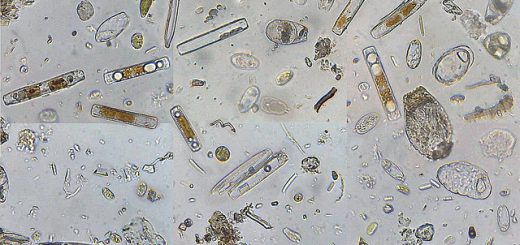Let Them Eat Cake
Faye McLeod tells us why cake and coeliac sufferers don’t mix
Most of us have heard the infamous expression ‘Let them eat cake,’ but imagine if you couldn’t indulge in a slice? For coeliac sufferers this is a serious issue. In the 17th century when the phrase was (wrongly) attributed to Marie Antoinette during a time of famine, there would have been no word to describe gluten intolerance. This is now a major issue in the UK, with 1% of the UK population suffering from coeliac disease – an autoimmune disorder triggered by the consumption of gluten that leads to the damage of the small intestine1. Gluten is a protein made of gliadin and glutenin found in wheat, rye and barley grains. In Western society, whole grains in bread, potatoes and cereals have been part of a balanced healthy diet for years. However, the prevalence of digestive system problems induced by gluten has increased greatly over the past 100 years2. Although this increase is partly due to better diagnostic criteria, the question remains as to precisely what triggers the development of coeliac disease or gluten sensitivity. A variety of environmental and genetic factors have been implicated in the aetiology of coeliac disease.
The processing of food plays a major role for coeliac sufferers. In bread products, the extent of protein interactions between gliadin and glutenin in gluten are important for dough formation in wheat flour, determining the elasticity and thickness of the product. For example, increasing the elasticity of bread affects the texture through enhancement of lower molecular weight glutenin. This process makes the development of products such as pizza dough possible3. In general, using grains with a higher percentage of gluten appears to produce fluffier dough; thus making more appealing products. Due to the distinctive properties of gluten it is also used in a wide range of different foods, expanding to ready-made meals, sauces and other processed goods. The average diet for someone in the West today contains many processed foods that contain gluten, increasing the exposure to gluten on a daily basis.
Vulnerability to the development of coeliac disease isn’t just related to a higher level of exposure to gluten in our food environments. It also involves a genetic predisposition – namely the presence of human leukocyte antigen HLA-DQ2 or HLA-DQ8; with the former having the strongest association to the development of coeliac symptoms4. HLAs are normally displayed on the cell surface of antigen-presenting cells and bind peptides recognised by T cells in a pathogenic immune response. In coeliac patients, negatively charged gluten peptides are bound by HLA-DQ2/8 which provokes a CD4+ T cell response, ultimately creating an inflammatory immune reaction. It is now known that an enzyme, known as tissue transglutaminase 2 (TG2), can modify gluten so that it is the right composition to bind HLA-DG2/85. TG2 is mostly found intra-cellularly in an inactive form, but becomes active during its release in tissue damage6. An essential step in finding effective treatments – and possibly a cure – is to discover is what causes this tissue damage in the first place, one possible explanation being a gastrointestinal infection.
However, not all HLA-DQ2/8 positive individuals develop coeliac disease. Genome-wide studies have revealed over 20 non-HLA loci associated with the disease which contain genes involved in immune response7. Yet this does not provide a complete explanation for coeliac sufferers’ symptoms and there is still a vast amount of research needed to identify specific factors involved. A complex involvement of environmental and genetic influences leading to increased gluten presentation is the most likely culprit. Current treatment involves eliminating gluten completely from the diet, which if sustained, results in a full recovery in the majority of cases. Yet in practice this is hard to do, with gluten being present in many, if not most, contemporary food sources. Furthermore there is an added expense of purchasing gluten-free products. Other treatments in experimental phases are more specifically targeted than simple diet change. One treatment involves tissue transglutaminase inhibitors or blockers of HLA-DG presentation for example8. With further exploration into the etiology and control of coeliac disease, and the sophisticated interplay between genes and environment, sufferers may hopefully one day ‘have their cake…and eat it too’.
References
- Van Heel DA and West J. Recent advances in coeliac disease. 2006. Gut 55:1037-1046
- Losowsky MS. A history of coeliac disease. 2008. Dig dis 26:112-120
- Edwards, N. M., Mulvaney, S. J., Scanlon, M. G., Dexter, J. E. Role of gluten and its components in determining durum semolina dough viscoelastic properties. 2003. Cereal chemistry 80: 755–763
- Spurkland A, Ingvarsson G, Falk ES, Knutsen I, Sollid LM, Thorsby E. Dermatitis herpetiformis and celiac disease are both primarily associated with the HLA-DQ (alpha 1*0501, beta 1*02) or the HLA-DQ (alpha 1*03, beta 1*0302) heterodimers. 1997. Tissue Antigens 49:29–34
- Molberg O, McAdam SN, Korner R, Quarsten H, Kristiansen C, Madsen L, Fugger L, Scott H, Noren O, Roepstorff P, Lundin KE, Sjostrom H, Sollid LM. Tissue transglutaminase selectively modifies gliadin peptides that are recognized by gut derived T cells in celiac disease. 1998. Nat Med 4:713–717
- Siegel M, Strnad P, Watts RE, Choi K, Jabri B, Omary MB, Khosla C. Extracellular transglutaminase 2 is catalytically inactive, but is transiently activated upon tissue injury. 2008. PLoS ONE, 3:e1861
- Dubois PC et al. Multiple common variants for celiac disease influencing immune gene expression. 2010. Nat Genet 42:295–302)
- Selimoğlu MA and Karabiber H. Celiac disease: prevention and treatment. 2010. J Clin Gastroenterol 44:4-8










